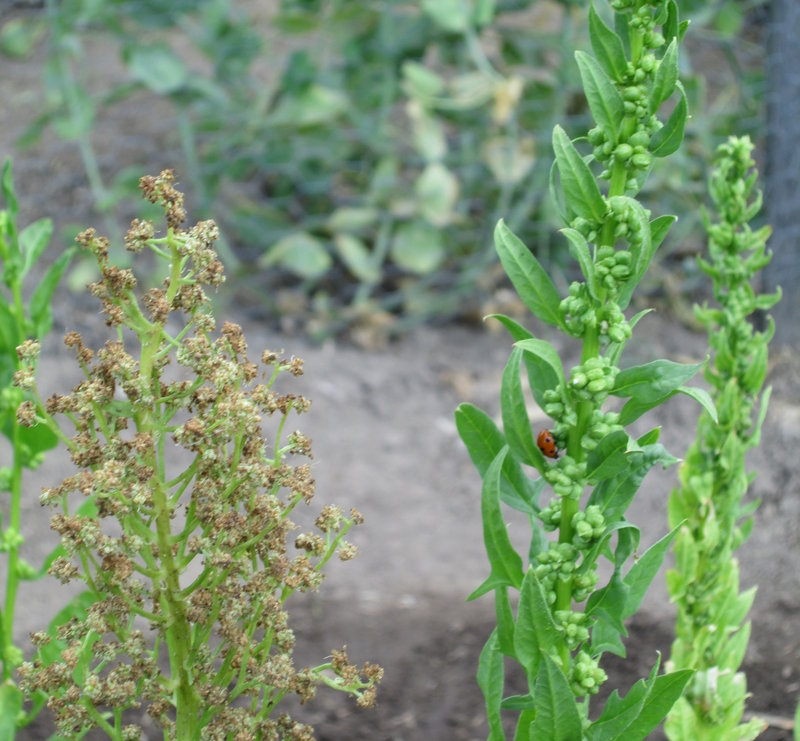5 Tips for Planning Your Seed Garden

Bob Wildfong
Are you thinking of saving some seeds this year? It's easier than most people think, and the best time to start is now, while you're planning your garden!
Here are my top five tips for planning your seed saving garden:
1. Get Enough Sun.
Most plants prefer full sun to make good quality seeds. That's because plants are solar-powered, so they grow to maturity faster and stronger when they get lots of sunlight. In a city garden it can be challenging to find sunny places among the trees and buildings, so gardeners often grow leafy plants like lettuce and spinach in shade or part shade, because they can tolerate less sunlight. The reason is that plants need more energy to produce fruit and seeds, than they need for leaves - which is why many plants will survive in shady places, but not bloom.
If that's your strategy with greens, remember that you're growing seeds now. Spinach, lettuce, chard, and other leafy vegetables are fine in partial shade if you just want the leaves, but they need more solar energy to produce flowers and seeds.
2. Isolate Varieties.
You've heard this before, but that's because it's so important. If you want your seeds to be "true to type", which means they will grow the same as the plants they came from, you have to prevent them from being cross-pollinated with other varieties. Learn which plants cross with each other (pumpkins cross with zucchini, but not with watermelons) and how far apart you should plant them to limit their crossing. Also keep in mind what your neighbours are planting, and how far away their gardens are.
If in doubt, there are many references for isolation, including our book How to Save Your Own Seeds. The easiest vegetables for small garden seed saving are: tomatoes, beans, peas, and lettuce. We recommend at least 3 m (about 10 feet) of space between different varieties for home seed saving (more for commercial seed production).
3. Don't Baby Your Seed Crop.
You want all your plants to grow perfectly, but there's that corner of the garden that always dries out, or where the soil is crustier and the lettuce always bolts. Use that to your seed-saving advantage! Every gardener learns to keep lettuce tender, radishes mild, and mustard greens lush by giving them plenty of water, rich soil, and lots of tender loving care. The reason is that they go to seed otherwise. Take Nature's hint, and let your seed crop struggle a little. You'll get more seeds, and they'll ripen earlier.
4. Leave extra space, and time.
You harvest tomato seeds from ripe tomatoes, and pumpkin seeds from ripe pumpkins. But keep in mind that your seeds for lettuce, cucumber, broccoli, zucchini, radishes, all biennial vegetables, and anything that you eat before it bears seeds, will need more time to grow than you're used to. Also, the plants will grow taller and/or wider when they grow flowers and seeds.
For example, you can easily grow head lettuces spaced a foot apart, but you'll want at least a foot and a half between them when they grow to full seed-bearing size. Also, that will take about five extra weeks after the time you would normally eat the lettuce. One strategy is to plant at your normal spacing, and eat every other head, to give the rest more space to grow to seed. Depending on the variety and your climate, you might also want to start your lettuce seeds indoors so they have a good chance of seeding during the dryer part of late summer.
5. Plan succession with seed harvests in mind.
Lastly, while you think about the longer season needed for greens, annual root vegetables and soft fruit like cucumbers and zucchini to set mature seeds, this is a good time to plan how you will rotate your planting during the season.
If you normally plant radishes in spring, harvest them within a month and re-sow that space with green bush beans (a smart plan if you're a non-seed-saver), you'll have to change that plan if you're growing the radishes for seed because they'll need half the summer to mature. Maybe you don't need the whole row for seed (a dozen radishes will give you plenty of seeds). Leave one end of the row to grow to seed, and harvest the rest of the radishes for eating. Then re-sow the harvested part with short-season spinach that will finish at about the same time as the radishes go to seed. You could end up with a more complicated garden, part-rows maturing at different times, but most of us end up with something like that at the end of the season anyway, seed saving or not.
All part of the fun of saving seeds, is discovering how it becomes part of the way you think about your garden and its schedule. If the turn of the seasons is part of what you love about gardening, you'll find lots more to love in saving your own seeds.
**
Bob Wildfong is the Executive Director of Seeds of Diversity, and has been a seed saver for over 25 years.
Not yet a member?
An annual membership to Seeds of Diversity gives you access to our seed exchange, seed grow-out programs, and our online news.

We depend on donations to do our work.

Thank you for your support!
